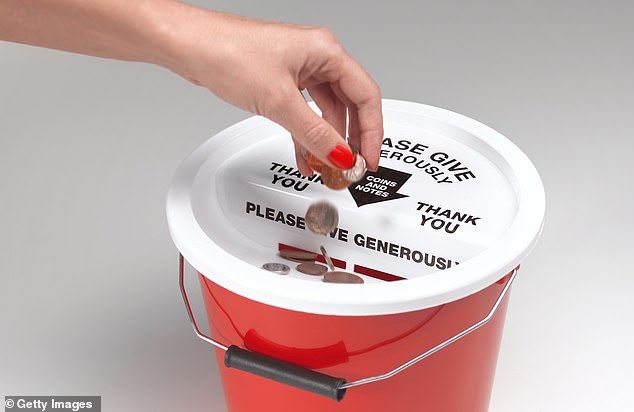How to max out your tax benefits before the end of the year: Experts explain the perks you could miss out on unless you act NOW
Tax season doesn’t officially start until 2024, but there are still plenty of money-saving steps that can be taken before December 31.
Federal tax returns and payments are due April 15, 2024.
If you’re hoping to reduce your bill before the April deadline or receive a larger refund, experts urge taxpayers to take advantage of planning strategies as early as possible.
Some benefits are subject to the use-it-or-lose-it rule, meaning they must be used before the end of the year or they are lost forever.
DailyMail.com has rounded up the items for your year-end financial checklist.
Make the most of your 401(K) contributions
Americans can minimize their tax bill by maximizing their annual contributions to their workplace 401(K) retirement plan.
By 2023, workers can save up to $22,500 pre-tax in a 401(K) plan if they’re under 50, and up to $30,000 if they’re over 50. Starting next year, the cap for those under 50 will rise to $23,000 .
Florida financial planner Paxton Driscoll told DailyMail.com, “If you’re a small business owner, consider opening a solo 401(K), which is designed for the self-employed, or a Simplified Employee Pension (SEP) IRA.
“With a SEP IRA, you can contribute 25 percent of the income you earn. For example, if that is €200,000, you can set aside €50,000.’
Florida financial planner Paxton Driscoll recommends using tax planning strategies before the end of the year
Consider itemized deductions
Many taxpayers claim the standard deduction to reduce their income by a preset amount: $13,850 for single filers and $27,700 for married, joint filers in 2023.
But if you think your itemized expenses could be above the breakeven point of the standard deduction, Driscoll explains, it’s worth thinking about any expenses that can be written off as a tax deduction.
If you’re a business owner and are close to reaching the standard deduction threshold, consider “bundling” future expenses into this year.
“Let’s say you’ve been working as an electrician for the past 10 years and you’ve been using a work truck all that time,” he said.
“Use your profits right before the end of the year to buy a new work truck and then carry that depreciation over to this year and next year.”
Sell losing investments to offset gains
The IRS taxed capital gains, which are the profits you earn when you sell an investment, including stocks, shares and mutual funds.
To lower your tax bill, investors who use investment accounts can consider a strategy known as “tax-loss harvesting.”
For example, Driscoll explained that you may have sold stock this year and had a capital gain of $10,000. This can come from multiple transactions or just one transaction.
“Then you might have put $10,000 into a stock that dropped all the way to zero,” he said.
“If you sell those shares, you’ve made a $10,000 loss, but because you also have a $10,000 profit, you break even and pay nothing in taxes.”

To lower your tax bill, investors who use investment accounts can consider a strategy known as “tax-loss harvesting.”
Maybe you also made $10,000 but lost $13,000, he continued.
If your capital gains drop to zero and you are left with losses, you can offset your income for the year by up to $3,000.
“You can carry that $3,000 indefinitely until it’s gone and you’ve written off all your capital losses,” Driscoll added.
Keep in mind that the IRS has a caveat to this rule that you can’t buy the same shares within 30 days of selling because that would violate what’s called a “wash sale,” Jonathan Johnson, senior financial advisor at Blue Chip Partners. Fortune.
For example, you can’t sell shares of Coca Cola to claim a loss and then immediately buy them back, he said.
But you can buy Pepsi stock – or wait 30 days – and maintain your exposure to that sector.
Make a charitable donation
Many Americans make donations to charities around the holidays, and it can also be a way to maximize your tax benefits.
Instead of withdrawing $2,000 from your bank account or savings (after-tax dollars), you can donate shares from your IRA or brokerage account that have increased in value and have a capital gain attached to them,” Driscoll said.
‘Most major charities are set up to handle these types of transactions. It’s a way to give away appreciated stock, or just money you have saved in your IRA that you want to give away – and then you don’t have to pay taxes on it.”
If you’re 73 or older, you might also consider taking advantage of a qualified charitable distribution (QCD), financial planner Matthew Schwartz told me. Bank rate.
With a direct donation, you can avoid the taxes associated with an IRA withdrawal.
“A QCD can offset the taxes resulting from required minimum distributions (RMDs) and potentially reduce your Social Security taxes,” says Schwartz.

Many Americans make charitable donations around the holidays, and it can also be a way to maximize your tax benefits before the end of the year
Spend your FSA money
Experts are also urging Americans to prioritize using their remaining flexible spending account (FSA) balances sooner rather than later.
An FSA is an employer-sponsored benefit that allows employees to set aside a portion of their pre-tax income (up to $3,050 per year by 2023) to pay for eligible out-of-pocket health and care expenses.
An FSA is subject to the use-it-or-lose-it rule and most funds mature at the end of the year.
According to the latest figures from the Employee Benefit Research Institute, more than two-fifths of workers have lost at least some of their FSA contributions in the past two years, with the average person losing between $339 and $408 annually.
‘While it may be tempting to avoid depleting your balance prematurely, it is important to consider the turnaround time for obtaining prescriptions and getting your claims reimbursed, as well as the delays in obtaining a bill from a medical professional to verify relevant products,” says Michael. Dinich, founder of the personal finance website Wealth of Geeks.
An FSA doesn’t just cover traditional health care costs, such as medical appointments, over-the-counter medications and co-pays, he added.
It also includes some lesser-known products such as menstrual products, fertility tests and glasses and contact lenses.
Check your tax withholding for next year
Check online how much income tax will be withheld from your paycheck tax withholding estimator.
According to the IRS, about 70 percent of taxpayers withhold too much each year, resulting in a refund.
Those who haven’t withheld enough could face a shock bill for 2023.
